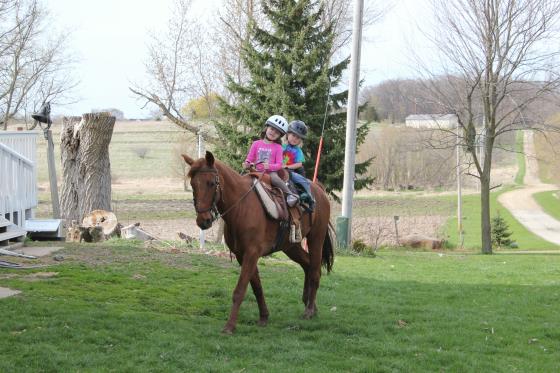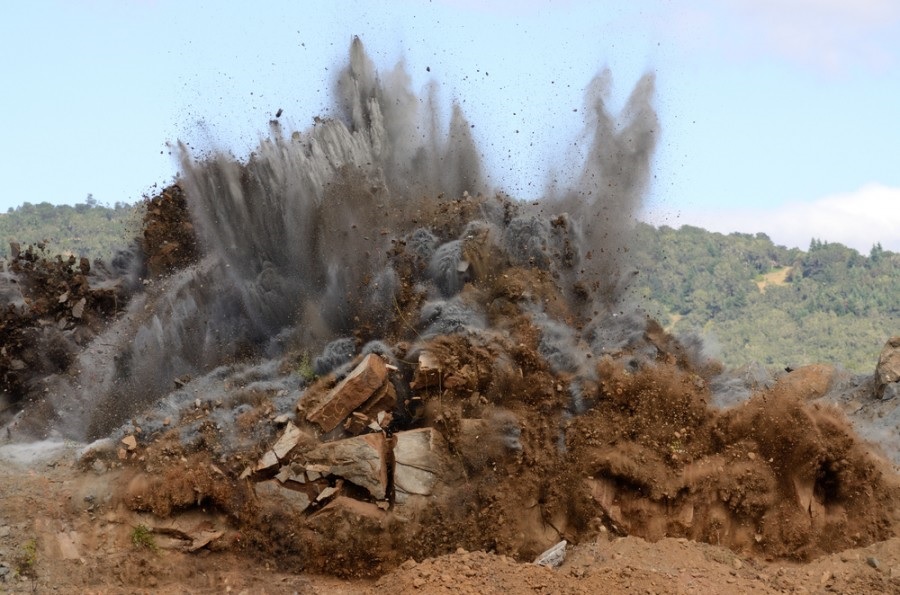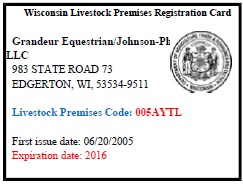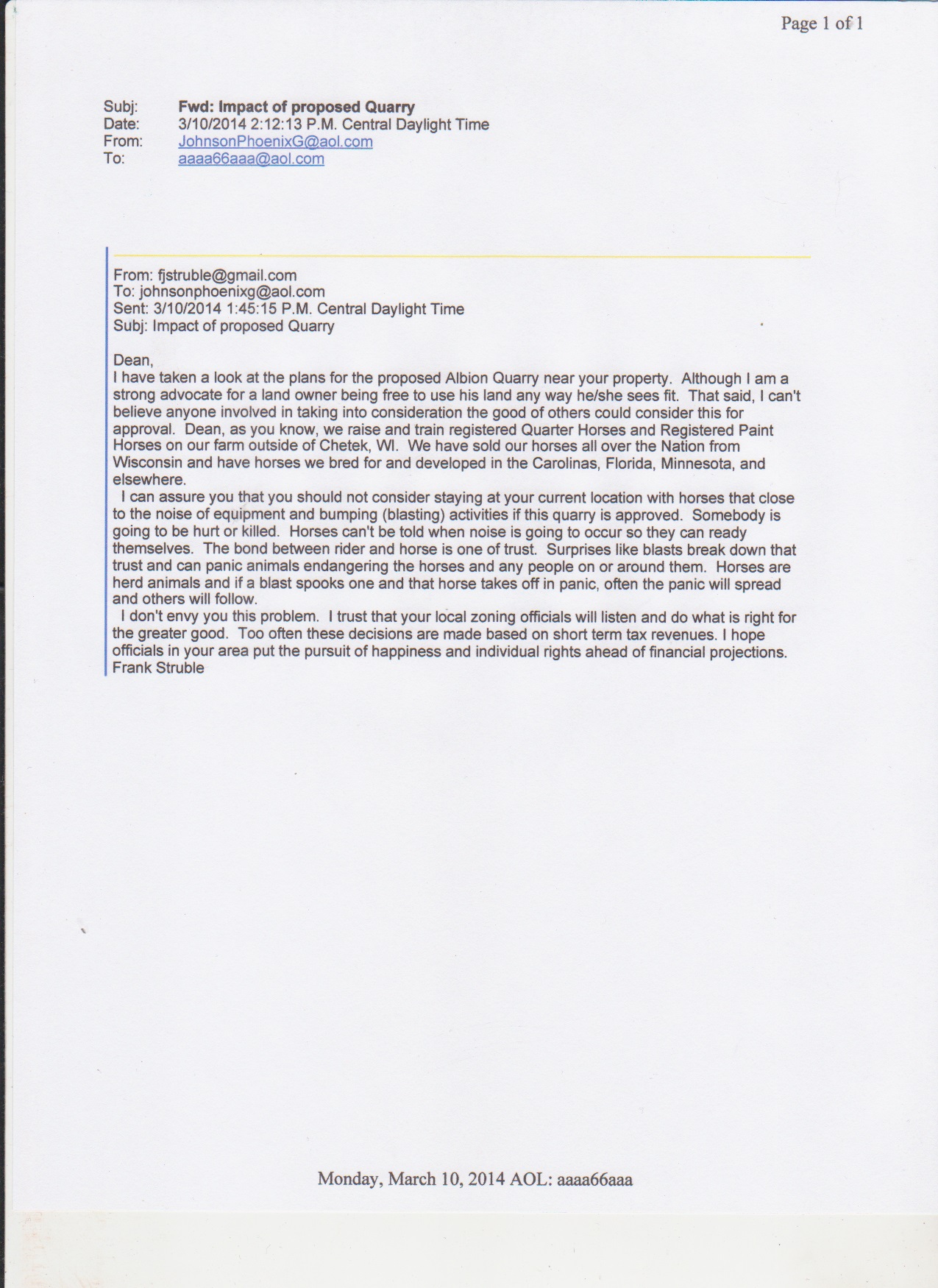

The Bomb Proof Horse from an email sent to Dane County Zoning
There is a term that many inexperienced people that get involved in the horse business use, and it is a term that unethical people in the business teach them, it is called "bomb proof". That is a horse that is supposedly so safe that nothing will spook them. In 50 years of horseback riding, showing, training I can no longer even keep track of how many "bomb proof" horses I have seen put down or sent to export to Canada for meat slaughter, and the story is always the same "So and so sold me this horse that was supposed to be "bomb proof" but it threw my little girl and she broke her this and that, this horse is dangerous!"
This is a sad situation for all involved, because in reality there is no such thing as a "bomb proof" horse until it is a dead horse. It is rarely the horses fault, it is the fault of the unscrupulous person that stated the horse cannot be spooked, and it is the tragic fault that the injured party lacked the education or experience and believed them, the only one not at fault is the horse. Horses are not inherently dangerous, they come to their senses and calm down quickly most times, it is that split second freak out instinct that you always have to be expecting and the only way to reduce that risk and protect yourself from injury is to be prepared for it, or avoid conditions likely to provoke that instinct. Even horses used in riot control can spook, and an expert rider can sometimes not even control them. I have witnessed horses that have been in constant show training around noisy fairgrounds for over 10 years, suddenly rear up, take off, or dump a rider.
Erica Zick is a very experienced horsewoman and her children have had good instruction in riding, the concern she has for her children's safety is real, they are too young to really understand this. Kids do all kinds of dangerous sports, it is a part of life, even a skateboard can kill a child, but the difference is, nothing can spook a skateboard and cause it to injure someone. There is no question that this mine activity can result in tragedy, and it is just not right to set things up for one to happen.
Signe Johnson -Grandeur Equestrian
CLICK ON THE FILE TO THE RIGHT TO READ THE FACTS ON MINES AND HORSE SAFETY
! HORSES, MACHINE NOISE, VIBRATION, AND BLASTING DON'T MIX !
Horseback Riding Safety - Published by West Bend Mutual Insurance Company
Real World Horseback Riding Injuries
A 12-year-old girl suffered severe brain injuries after being thrown from a horse. The trail they had been riding on had become wet due to severe rains the night before and the horse lost its footing. Even though the girl was wearing a helmet at the time, the force from the throw was enough to cause severe damage to her skull and brain. It is likely that if she had not been wearing the helmet she would have been killed. Since the injury the girl has gone through 14 surgeries and has slipped into a coma twice. She now requires constant care by her parents, but is slowly regaining the ability to speak and interact with others.
Statistics
There are an estimated 30 million horseback riders in the United States
In 2007, 78,000 people were seen in US emergency rooms due to horse-related injuries
Of the 78,000 injuries, 9,600 were admitted to the hospital for further treatment
The rate of serious injuries per riding hours is higher for horseback riders than for motorcyclists and automobile racers
Riders under the age of 15 represent 20% of horse-related injuries
One in three horse-related injuries happen when the rider is dismounted. These injuries typically involve the rider being kicked or stepped on by the horse.
The most common mounted injuries involve riders being thrown or falling off the horse.
Horse Dangers
Horses are large powerful animals that are capable of tremendous speed and power. Horses often stand 6 feet tall, weigh more than 1,000 pounds, and are capable of speeds of 35 miles-per-hour. The most common types of injuries from horses are fractures, bruises, abrasions, sprains, strains, and concussions. Injuries from horses can also occur on the ground from being stepped on or kicked by the horse. The greatest danger from horses is being thrown from a horse which can result in severe neck, spine, and head injuries.
Safe Approach
Horses are easily spooked and these are the instances in which the majority of injuries occur. Making sure all staff and riders are aware of the dangers posed by frightened horses and what actions can frighten them can help prevent injuries. Some examples of things that can spook a horse include:
Sudden or unexpected movements
Loud, sudden noises (alarms, whistles, bells, cell phones, screams, etc.)
Large crowds
Other animals (for example, unleashed dogs)
Wasps, and other insects
Camera flashes
Horseback Riding Injury Prevention - AAOS
Horseback riding is great exercise for the entire body. But if you do not take appropriate precautions, you can be seriously injured while riding. According to the National Electronic Injury Surveillance Survey (NEISS), an estimated 78,499 people were treated in hospital emergency rooms for horseback riding injuries in 2009.
Horseback riding injuries often occur to the arms as riders try to break a fall. These injuries include bruises, sprains, strains, and fractures of the wrist, shoulder, and elbow. The most serious horseback riding injuries can damage the spine and head.
Here are some tips from the American Academy of Orthopaedic Surgeons (AAOS) to prevent horseback riding injuries:
All riders should always wear horseback riding helmets that meet proper safety standards.
Wear properly-fitted, sturdy leather boots with a minimal heel. Your clothing should be comfortable and not too loose.
Inspect all riding equipment to make sure it is not damaged.
Be sure the saddle and stirrups are appropriate to your size and are properly adjusted.
Secure all riding equipment properly.
Children and novice riders should consider using safety stirrups that break away if a rider falls off the horse.
Novice riders should take lessons from experienced instructors.
Young horseback riders should always be supervised.
Amateurs should ride on open, flat terrain or in monitored riding arenas.
Jumps and stunts require a higher level of riding skill. Do not attempt these without supervision.
If you feel yourself falling from a horse, try to roll to the side (away from the horse) when you hit the ground.
Do not ride a horse when you are tired, taking medications, or under the influence of alcohol.
Always remember that you are riding an animal that has its own reactions to the sights, sounds, and smells you are both experiencing.
Horses are flight animals. They will run away from sudden noises and movements. Stay alert for anything that might startle your horse. Be prepared to respond quickly.
When trail riding, do not go off trail, no matter how tempting. Heed warning signs.
Never walk behind a horse. It is best to approach them at their shoulder. This is less threatening to them.
To gauge a horse's demeanor, watch the horse's head, particularly its ears. The ear movements of a horse will provide you with information about how the horse is reacting to its environment, people, or other animals. A horse will direct one or both of its ears toward a sound. Ears held the side can indicate that a horse is sick, sedated, or sleeping. Ears that are pinned back indicate anger or a threat.
If you are giving the horse a treat, be sure to keep your hand open and your fingers extended and flat. Horses can inadvertently bite and break fingers that are cupped around a treat.
Source: US Consumer Product Safety Commission's National Electronic Injury Surveillance System (NEISS, 2005-2009)
Horse Dangers
Horses are large powerful animals that are capable of tremendous speed and power. Horses often stand 6 feet tall, weigh more than 1,000 pounds, and are capable of speeds of 35 miles-per-hour. The most common types of injuries from horses are fractures, bruises, abrasions, sprains, strains, and concussions. Injuries from horses can also occur on the ground from being stepped on or kicked by the horse. The greatest danger from horses is being thrown from a horse which can result in severe neck, spine, and head injuries.
Safe Approach
Horses are easily spooked and these are the instances in which the majority of injuries occur. Making sure all staff and riders are aware of the dangers posed by frightened horses and what actions can frighten them can help prevent injuries. Some examples of things that can spook a horse include:
Sudden or unexpected movements
Loud, sudden noises (alarms, whistles, bells, cell phones, screams, etc.)
Large crowds
Other animals (for example, unleashed dogs)
Wasps, and other insects
Camera flashes
In recent years, that is just what the New Hampshire Horse Council has been trying to do with their “Share the Road” campaign. The NHHC uses education and leadership to act as a liaison among horse groups, the general public and the legislature. They submitted press releases through various types of media advising drivers,
“Please slow down and pass wide, and allow as much room as feasible between the horse and the vehicle. Slowing down allows the horse and rider (driver) enough time to realize a vehicle is approaching and to make sure the horse is prepared for the vehicle to pass. When approaching a horse from the rear, it is important to know that the horse and rider (driver) is going to be less aware of your presence, so please be cautious. Never sound the horn or create loud noises, as this might cause the horse to spook.”
Talented teen rider dies after farm vehicle startles her horse: The Guardian Monday Aug. 12th 2013
A talented teenage equestrian event rider has died after falling from her horse as it was frightened by the sound of a farm vehicle near her home in Suffolk. Lucinda Woolley, 16, was airlifted to hospital and underwent three hours of surgery after she was thrown from the animal on Wednesday last week, but died a day later from her injuries. Lucinda had already proven to be an accomplished young horsewoman with very consistent eventing form.
Horseback Riding - From The American Academy of Pediatricans
Horseback riding (equestrian) is a common activity in the United States; about 30 million people go horseback riding every year. Unlike other sports, the risk of injury is highest for the most inexperienced riders. As riders gain experience, they learn how to avoid injury as they learn to properly handle the horse.
Most horseback riding injuries happen when a rider falls or is thrown from a horse. Falls are more likely to produce serious injuries if the horse is moving quickly or if the rider is dragged or crushed by the horse. However, not all injuries happen while riding. The most serious injuries while off the horse are from horse kicks.
The following is information from the American Academy of Pediatrics (AAP) about how to prevent horseback riding injuries. Also included is an overview of common horseback riding injuries.
Injury prevention and safety tips
Stable conditions. Proper care of the horses is important. Stables should be well maintained and staffed with trained professionals.
Horse safety. Riders should always be careful around horses and should be instructed to never walk behind a horse, or make sudden movements or loud noises near them. Riders should never ride unsupervised or ride horses with unknown temperaments. A trained professional should check that all equipment is in good working order. Girth strap, stirrup leathers, and reins should be securely fastened before children are allowed to ride.
Published by Mheac Insurance:
There are many people who love horse riding. They may do it for pleasure or they may want to train their horses to participate in races. People may own their own horses or they may hire them or they may join a stable group which lends horses for people to ride. In all these cases there is always an element of risk that the horse may meet with an accident or it may throw up the rider or something untoward may happen to the person.
One has to remember that even the gentlest of animals can be spooked or get involved in accidents while being ridden. Some sudden sound or shot or some unexpected happenings while the horse is galloping can cause accidents. This can require hospitalization, which costs a lot of money. It is always better to have insurance coverage for all these circumstances. A policy that includes coverage of accidents and provides medical insurance as a rider, or to prevent others from suing in an accident should be bought as soon as a person begins to ride horses....Horses are big animals and even a simple kick can land a person in hospital. As the person becomes an expert in horse riding, he may feel like jumping, cross-country or some other extreme sport, which is fraught with dangers. He may want a challenging horse that is rebellious or defiant and handling such a horse can lead to accidents. It is not only during dangerous rides that something can happen; it can even happen during a simple ride. The horse may get frightened even if a car backfires and may unseat the rider, creating a health hazard.
MINE NOISE, BLASTING, AND VIBRATION CAN SPOOK HORSES
OPPOSE CUP#2260
AND PREVENT A TRAGEDY
READ THE FACTS BELOW

 | ||||||
THESE CHILDREN LIVE WITHIN 1000' OF THIS SITE!

WE HAVE PROPERTY RIGHTS
WE ARE A REGISTERED EQUINE LIVESTOCK PREMISES
WE HAVE EXISTING EQUINE ZONING
WE HAVE BEEN CONTINUOUS IN EQUINE ACTIVITY FOR 28 YEARS
WE PURCHASED OUR PROPERTY FOR EQUINE ACTIVITY
WE WILL LOSE OUR EQUINE ACTIVITY INSURANCE
WE WILL BE PREVENTED FROM CONDUCTING ANY EQUINE ACTIVITY BY CUP #2260

I DID NOT TAKE THIS VIDEO, THIS VIDEO CONTAINS COMMICAL MUSIC BUT THERE IS NOTHING FUNNY ABOUT WHAT CAN AND DOES HAPPEN TO A HORSE AND PEOPLE WHEN A HORSE IS SPOOKED. A HORSE CAN RUN BREAK THRU OR GO OVER ALMOST ANY FENCING A RUN FOR MILES UNTIL IT FEELS SECURE AGAIN, IT CAN AND OFTEN WILL MOW DOWN ANYTHING IN IT'S PATH. iT CAN ENTER TRAFFIC, IT CAN RUN DOWN UNSUSPECTING NEIGHBORS, HORSES NEED A CALM ENVIRONMENT, THE HORSES IN THESE VIDEOS ARE FULLY TRAINED SHOW HORSES SOME HAVE COMPETED IN HUNDREDS OF SHOW CLASSES, YET WERE STILL ABLE TO BE SPOOKED BY SOME NOISE, ACTION, OR A SIGHT IN THE CROWD. MY OWN HORSE IS A CARRIAGE HORSE, IMAGINE WHAT COULD HAPPEN ON OUR PROPERTY IF AN UNFAMILIAR NOISE OR VIBRATION FROM THIS MINE OPERATION CAUSED MY HORSE TO SPOOK WHILE HITCHED TO OUR CARRIAGE. WHAT IF I DIDN'T GET AN EMAIL ABOUT A SCHEDULED BLAST?
THE MAN WHOSE HORSE SPOOKED IN THIS VIDEO IS AN EXPERT HORSEMAN WHO OWNS A LARGE BREEDING AND TRAINING FARM, HIS HORSES HAVE INCLUDED SEVERAL NATIONAL CHAMPIONS AND ARE SOME OF THE BEST TRAINED HORSES IN THE COUNTRY, THIS WAS AT A REGIONAL CHAMPIONSHIP SHOW. IF YOU LOVE HORSES, I SUGGEST YOU NOT WATCH THE LAST MINUTE OF THIS VIDEO, IT IS TRAGIC.
